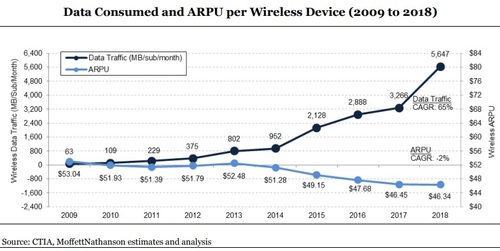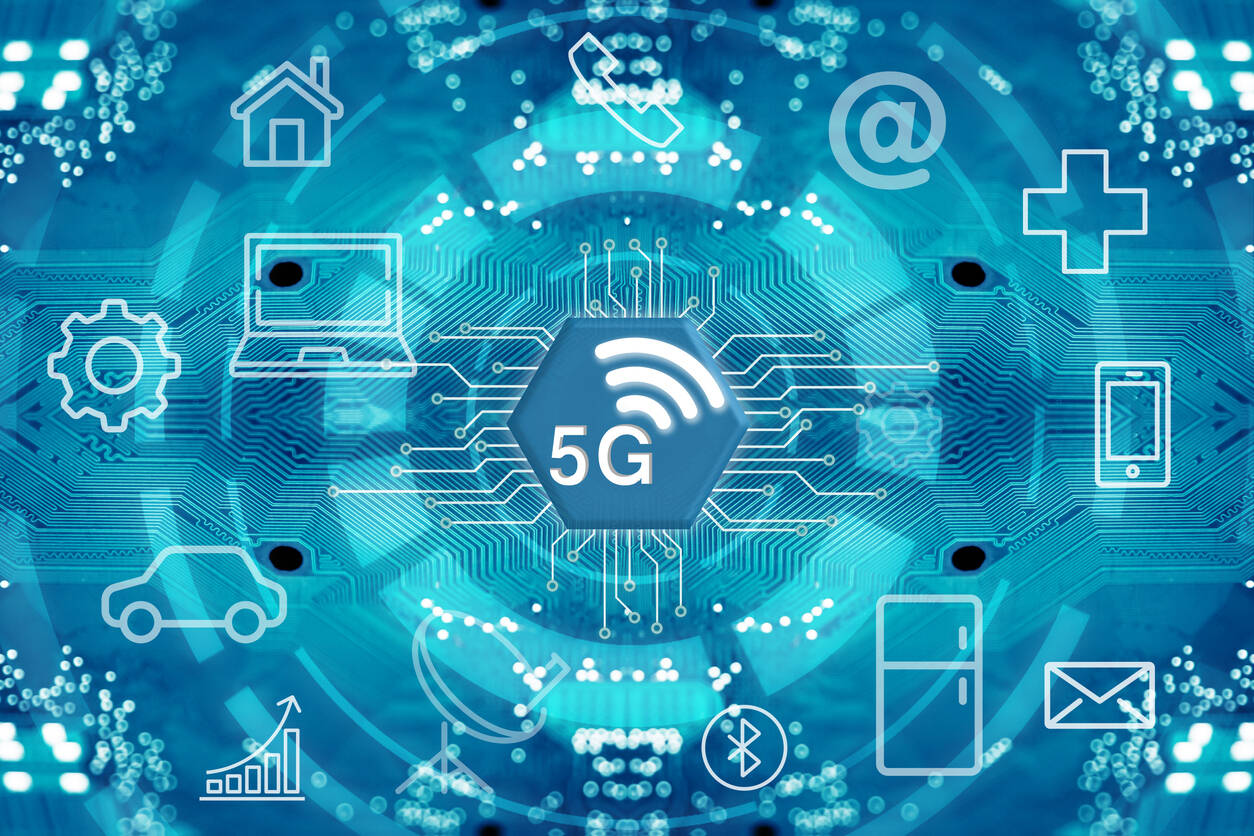Gartner: 5G IoT endpoints to triple between 2020 and 2021; Surveillance cameras to be largest market over next 3 years
Executive Summary:
After 3GPP release 16 has been completed and included in IMT 2020 RIT/SRIT, 5G networks will offer ultra-reliable, ultra-low-latency and high-bandwidth capabilities. That will open up new enterprise market opportunities for communications service providers/wireless network operators. Therefore, understanding the future market is key to an effective strategy. Gartner Inc. says that IoT use cases like surveillance cameras and connected cars will offer the biggest markets for 5G IoT.
| Segment | 2020
Volume |
2020
Market Share (%) |
2023
Volume |
2023
Market Share (%) |
| Connected cars — embedded (consumer and commercial) |
393 |
11 |
19,087 |
39 |
|
Outdoor surveillance cameras |
2,482 |
70 |
15,762 |
32 |
|
Fleet telematics devices |
135 |
4 |
5,146 |
11 |
|
In-vehicle toll devices |
50 |
1 |
1,552 |
3 |
|
Emergency services |
61 |
2 |
1,181 |
2 |
|
Others |
400 |
11 |
5,863 |
12 |
|
Total |
3,522 |
100 |
48,590 |
100 |
Due to rounding, figures may not add up precisely to the totals shown
Source: Gartner (October 2019)
Connected Cars Will Offer the Biggest Opportunity for 5G IoT in the Long Term:
In 2023, the automotive industry will become the largest market opportunity for 5G IoT solutions. It will represent 53% of the overall 5G IoT endpoint opportunity in that year.
Within the automotive sector, embedded connected-car modules are the major use case for 5G. Embedded endpoints in connected cars for commercial and consumer markets will represent an installed base of 19.1 million units out of a total of 25.9 million 5G endpoints in the automotive sector in 2023.
“The addressable market for embedded 5G connections in connected cars is growing faster than the overall growth in the 5G IoT sector,” said Ms. Baghdassarian. “Commercial and consumer connected-car embedded 5G endpoints will represent 11% of all 5G endpoints installed in 2020, and this figure will reach 39% by the end of 2023.”
In addition, the share of 5G-connected cars actively connected to a 5G service will grow from 15% in 2020 to 74% in 2023. This figure will reach 94% in 2028, when 5G technology will be used for Cellular V2X communications that enable messages to be sent and received within vehicles and between vehicles, infrastructure, pedestrians, cyclists and more. Ultimately, connected cars actively connected to a 5G service will help keep traffic moving and improve road safety.
“As the automotive industry will be the largest sector for IoT endpoints and 5G IoT use cases in the long term, we recommend that CSPs that want to be relevant in the 5G IoT market put this industry at the forefront of their investments. They should do this in terms of personnel who understand the sector and of partnerships that will move the market forward,” said Ms. Baghdassarian.
Other Analyst and Industry Opinions:
“The industrial IoT market is among the most fractured especially amongst the verticals like healthcare and automotive,” said Lee Doyle, principal analyst with Doyle Research. “Large companies such a Cisco, HP and IBM have been challenged to address it because it is so fractured. It’s not at all clear any one of them has the overall network architecture to handle it all.” Vendors need to show users on a case-by-case, application-by-application basis what works, Doyle said.
…………………………………………………………………………………………………………………………………………………………………………………………………………
“With 5G, you can put more video cameras up in a big facility to monitor where folks are going and what they’re doing. Then bring analytics into the picture to increase efficiency. Speed really matters when you’re adding that many cameras,” said Samsung Networks’ VP of Networks Strategy & Marketing Alok Shah.
Shah believes the most “magical” element of 5G for enterprise users is decreased latency (so does this author, but it won’t happen till 3GPP Release 16 is finalized). “Bringing latency down substantially allows the user to perform from a remote perspective much more. Robotics in factories can be manipulated without being there in person,” he elaborated.
In addition, with 5G, the number of IoT sensors that can be implemented can skyrocket. “It can go up to a million sensors around a facility, which is huge,” Shah stated. “It’s a combo of these different things. You don’t get all of this at once because different devices have different requirements, but network slicing will help with this,” Shah added.
……………………………………………………………………………………………………………………………………………………………………
Ericsson’s new 5G business potential report considers a set of “5G-enabled B2B use case clusters” as drivers of industrial 5G revenues. Among these use case clusters, it said “enhanced video services” represents the largest opportunity for telecoms providers in terms of value across industrial sectors, worth up to 17 per cent or $118 billion of the total value by 2030.
Ericsson said enterprise 5G services will drive up to $700 billion of new revenues in the period. However, the total market, of 5G services for industry will be worth more than twice that, it said. The $700 billion operators can go for corresponds to 47 per cent of the total 5G business-to-business (B2B) market to be served by ICT players. Network operators must extend their reach “beyond connectivity” and consider newer roles for their services and expertise within the B2B value chain, and “what use case clusters to address.” Operators must act urgently, Ericsson warned, if they are to capture new value from industrial transformation services, as revenues for existing airtime services will remain stagnant through to 2030.
The chart below superbly illustrates the dire dilemma of network operators- traffic increasing exponentially, revenues (measured by ARPU) decreasing!

Jan Karlsson, senior vice president and head of B2B digital services at Ericsson, said: “The journey to grow the 5G business starts now by building momentum and identifying 5G-enabled B2B opportunities.”
Ericsson looked at the following industrial sectors for its report: manufacturing, automotive, energy and utilities, public safety, healthcare, media and entertainment, public transport, financial services, retail, and agriculture.
Other use cases in the report, besides enhanced video, include real-time automation, connected vehicles, and augmented/virtual reality. The company said use case examples building up these ‘clusters’ include live streaming of events, real-time monitoring of distributed energy, and autonomous cars.
–>Please refer to my comment in box below this article for more on the Ericsson report.
……………………………………………………………………………………………………………………………………………………………………
“Clearly there is no single access technology out there that solves all the problems and challenges of networking especially in the industrial arena where customers have one of every type of communications device imaginable, but 5G and Wi-Fi 6 will deliver a whole bunch of new use cases and address many multi-access requirement challenges,” said Liz Centoni, senior vice president and general manager of Cisco’s Internet of Things Business Unit, in an interview with Network World.
“Many industrial IoT use cases mandate wide mobility, low latency, and mission-critical reliability, such as mobile-robot control in production automation and autonomous vehicles in open-pit mining. These use cases rely on wireless access at 50ms to 1ms latency and service reliability from 5 nines to 6 nines,” Centoni wrote in a recent blog about 5G.
“4G/LTE has attempted to address these use cases but has often failed due to unsatisfactory performance. 5G’s combination of ultra-reliable and low-latency connection will extend industrial IoT to unconquered spaces,” Centoni.
Cisco’s Scott Harrell, senior vice president and general manager of enterprise networking told Network World the company expects to see a lot of 5G being used in branches as a faster backup and bandwidth alternative to current 4G or LTE links. Keeping an enterprise’s branch and campus locations all connected to each other and the internet has traditionally fallen to wired technologies like T1/E1 and xDSL, Harrell said. Today, 4G is often used to quickly bring up sites or as a back-up link, but it’s seldom used as a primary link, due to bandwidth limitations and cost, Harrell said.
https://www.networkworld.com/article/3446457/cisco-pushes-5g-to-hasten-industrial-iot.html
https://blogs.cisco.com/news/how-5g-will-accelerate-industrial-iot
https://www.ericsson.com/assets/local/5g/the-5g-for-business-a-2030-compass-report-2019.pdf
One thought on “Gartner: 5G IoT endpoints to triple between 2020 and 2021; Surveillance cameras to be largest market over next 3 years”
Comments are closed.




From cited Ericsson report:
As 5G networks are rolled out faster than expected, service providers need to identify which areas to prioritize for future growth.
As this study reveals, a significant proportion of future investments across industries is expected to be driven by new and advanced services based on 5G technology. The real challenge for service providers is how to identify which new areas to prioritize, as the global digitalization opportunity grows.
The service provider industry opportunity is confirmed to be significant but is expected later and to be somewhat differently distributed across industries. Healthcare now represents the largest addressable market, followed by manufacturing, energy and utilities, and automotive. All of the 10 industries considered here represent significant value pools, but all also present different barriers to entry. Deciding which segment to target, what role to take and which barriers to overcome presents key challenges for service providers preparing to address enterprise customers across industries. This study aims to support them on this journey.
The 10 industries examined in this study are: manufacturing, energy and utilities, public safety, healthcare, public transport, media and entertainment, automotive, financial services, retail, and agriculture. Investments driven by the value 5G is providing across these industries is expected to be around USD 1.5 trillion in 2030. But not all of this is expected to be addressable by service providers, as the ability to take a role in the value chain will differ by industry and be subject to the speed of disruption, geographic relevance and the complexity of applications that the addressed use cases entail.
The total value of the global addressable 5G-enabled market for service providers across the 10 industries is projected to be USD 700 billion in 2030, beyond mobile broadband.
https://www.ericsson.com/assets/local/5g/the-5g-for-business-a-2030-compass-report-2019.pdf